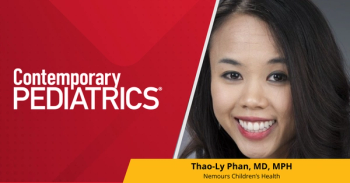
Managing pandemic related obesity in schools
School nurses and nurse practitioners play an important role in assessing the child’s health status related to obesity, potential for co-morbidities, and implementing appropriate management strategies.
Dr. Sheela N. Magge’s article,
Role of school nurses and NPs in obesity assessment in school-age children
Each year, school nurses conduct multiple screenings for school age-children including measurements for height, weight, calculating body mass indexes (BMIs), blood pressure readings, vision, hearing, and scoliosis. This year it will be especially important for school nurses and NPs in SBHCs to compare the results of these screening to past measurements. Children who have gained more than the anticipated amount of weight should be further evaluated for potential comorbidities, by reviewing their personal medical and family medical history. School nurses and NPs should also perform a dietary history and make suggestions for changes that may help obese children begin lifestyle behavioral changes to improve health care outcomes.
School nurses can refer the children to their primary care providers for further evaluation based on personal and family medical history. NPs can begin an action plan with children and adolescents using techniques of shared decision making to improve dietary selections. Both school nurses and NPs can engage families in the conversations about healthy eating to develop a goal for the child and even the family to improve food selection choices. School nurses and NPs may also offer weight management programs at school to engage children/adolescents in taking charge of their eating behaviors and physical activities that promote healthy behaviors.
Screening for prediabetes and diabetes and appropriate actions
Screening for prediabetes and diabetes in overweight and obese school age children and adolescents with a strong family history of diabetes encompasses both primary and secondary prevention strategies for prediabetes, diabetes, and related comorbidities. Comparison of the results of prior blood work to the most recent blood work helps to identify trends in the body’s ability to manage glucose levels, that shows evidence of trending up towards levels indicative of prediabetes. Early identification of these trends along with the support and identification of resources to incorporate nutritional, behavioral, and physical activity interventions to reduce overweight and obesity behaviors is step 1 in helping the child/adolescent and family manage overweight or obesity. A Table is included in Dr. Magee’s article that presents the prediabetes and diabetes blood work and confirming laboratory testing with a 2-hour blood glucose tolerance testing.
Overweight and obesity and feelings about oneself and mental health
A quick review of the literature using CINHAL and search terms ‘adolescent obesity and mental health’ revealed 190 research studies and using ‘obesity and mental health and children and adolescents’ revealed 178 articles investigating the relationships between overweight and obesity in the pediatric/adolescent population. Adolescents focus on their personal body image and the ways others perceive them. Asking children and adolescents about how they feel about themselves is an important component of each annual health care visit. Approximately 1 in 3 preadolescents (11- 13-years old) and 1 in 4 adolescents experience a mental health issue.1
Of importance to mental health in the pediatric/adolescent populations is a study that investigated the association of weight status to mental health in Massachusetts children aged 10 to17 years.2 Study outcomes revealed that overweight/obese children, especially girls, were more likely than children of normal weight to have parent-reported negative emotions.The researchers concluded that this evidence suggests an association between weight status and mental health. In addition, the authors reported that lower levels of physical activity were associated with negative mental health outcomes.2
In a more recent study, researchers conducted a 2-year long longitudinal study to examine physical and mental health trajectories of change in youth with a diagnosis of severe obesity.3
The study was conducted at a tertiary Canadian pediatric care center. Study participants ranged in age from 3 to 17 years. Study retention rate was 82.9%. Study outcomes included analysis of anxiety and depression in the children. Results revealed that improvement in mental health, quality of life, and cardiometabolic health of children and adolescents of all ages over the 2-year study period.3
It is clear that pediatric providers need to assess infants, children, and adolescents for overweight and obesity and provide resources for strategies to reduce the incidence and prevalence of overweight and obesity in the populations that we serve. In addition, school nurses and NPs who interact on a regular basis in school settings should take an active role in primary and secondary prevention strategies to not only reduce the incidence of overweight and obesity but also to avoid anxiety and depression that is often seen in children who are overweight or obese. Implementation of evidence-based strategies in school settings to reduce the incidence of adolescents who enter adulthood with an elevated BMI and potential for multiple comorbidities is an important role for school nurses and NPs.
References
1. Hoying J, Melnyk B. COPE: A pilot study with urban-dwelling minority sixth-grade youth to improve physical activity and mental health outcomes. The Journal of School Nursing. 2016;32(5):347-356. doi:10.1177/1059840516635713
2. Lu E, Dayalu R, Diop H, Harvey E, Manning S, Uzogara S. Weight and mental health status in Massachusetts, National Survey of Children’s Health, 2007. Matern Child Health J. 2012;16(S2):278-286. doi:10.1007/s10995-012-1145-1
3. Buchholz A, Howard A, Baldwin K, et al. Health trajectories of children with severe obesity attending a weight management program. Paediatr Child Health. 2019;25(7):439-446. doi:10.1093/pch/pxz088
Newsletter
Access practical, evidence-based guidance to support better care for our youngest patients. Join our email list for the latest clinical updates.









